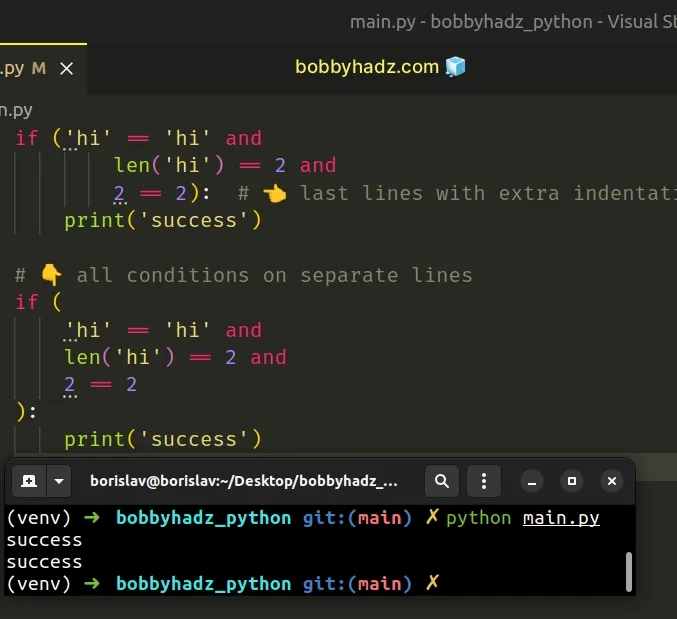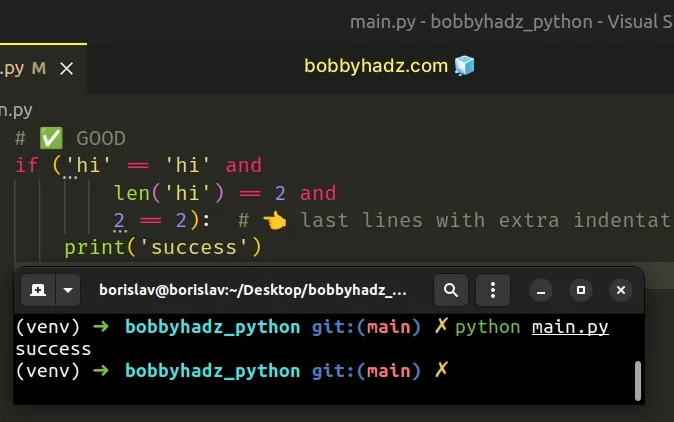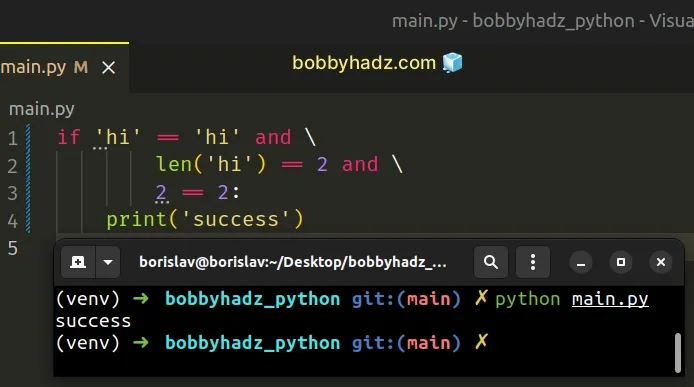Styling multiline 'if' statements in Python
Last updated: Apr 9, 2024
Reading time·2 min

# Styling multiline if statements in Python
The recommended style for multiline if statements in Python is to use
parentheses to break up the if statement.
The PEP8 style guide recommends the use of parentheses over backslashes and
putting line breaks after the boolean and and or operators.
if ('hi' == 'hi' and len('hi') == 2 and 2 == 2): # 👈️ Last lines with extra indentation print('success') # 👇️ All conditions on separate lines if ( 'hi' == 'hi' and len('hi') == 2 and 2 == 2 ): print('success')

The preferred way to wrap long lines according to the official PEP8 style guide is to use Python's implied line continuation inside parentheses, brackets and braces.
The guide doesn't recommend using backslashes for line continuation.
and and or.# Using extra indentation to differentiate between conditions
The first example in the code sample uses extra indentation to differentiate
between the conditions in the if statement and the code in the if block.
# ✅ GOOD if ('hi' == 'hi' and len('hi') == 2 and 2 == 2): # 👈️ Last lines with extra indentation print('success')

This makes our code more readable than using the same level of indentation for
the conditions and the if block.
# ⛔️ BAD (same level of indentation for conditions and body of if statement) if ('hi' == 'hi' and len('hi') == 2 and 2 == 2): print('success')
# Moving all conditions in the if statement on separate lines
You can also move all of the conditions in the if statement on separate lines.
# ✅ GOOD if ( 'hi' == 'hi' and len('hi') == 2 and 2 == 2 ): print('success')

if statement.For longer if statements, I find this a little easier to read than the
previous example.
# Using backslashes for line continuation
Even though the PEP8 style guide discourages using backslashes for line continuation, it still is a perfectly valid syntax.
if 'hi' == 'hi' and \ len('hi') == 2 and \ 2 == 2: print('success')

When using this approach, make sure to add extra indentation for the last line(s) of conditions.
If you use the same level of indentation for the conditions and the body of the
if statement, the code becomes difficult to read.
# ⛔️ BAD (same level of indentation for conditions and `if` body) if 'hi' == 'hi' and \ len('hi') == 2 and \ 2 == 2: print('success')
# Additional Resources
You can learn more about the related topics by checking out the following tutorials:

